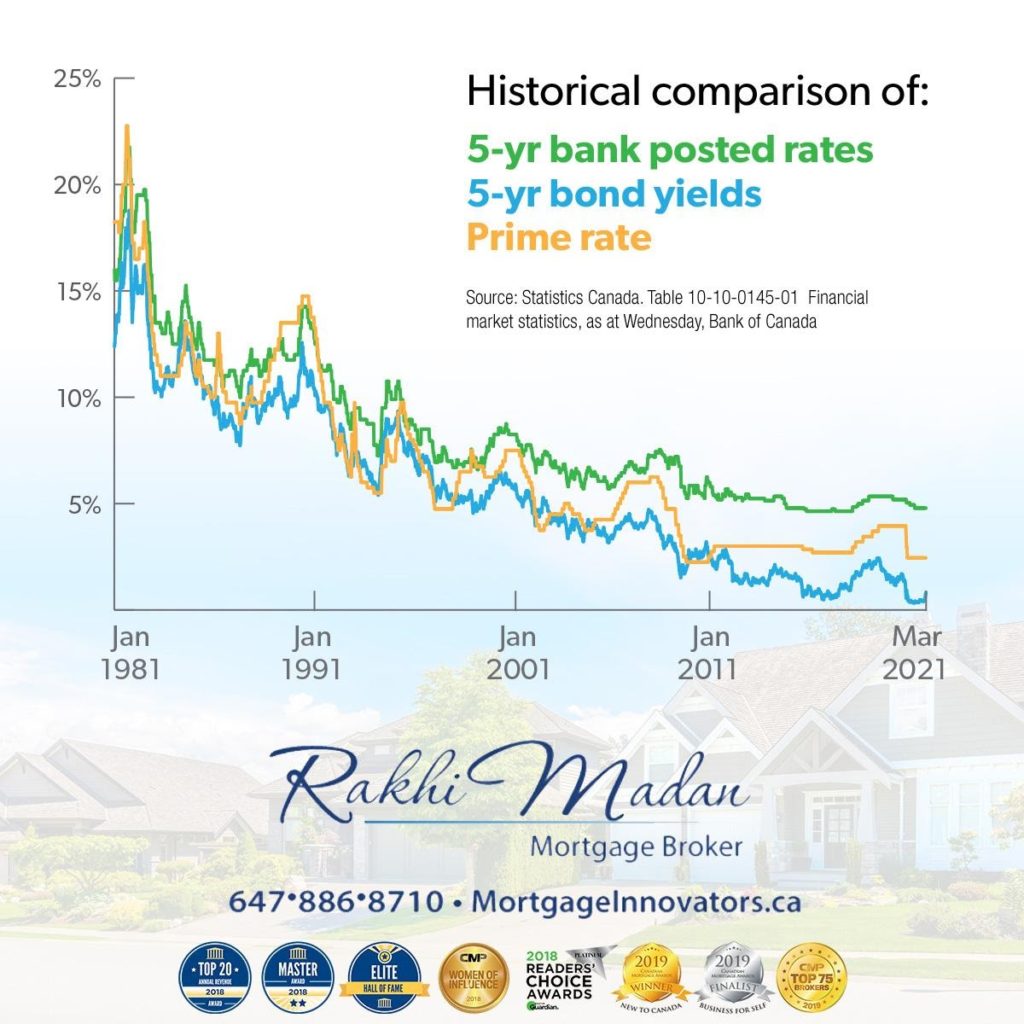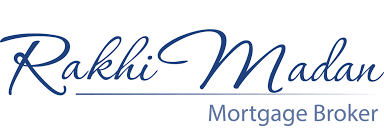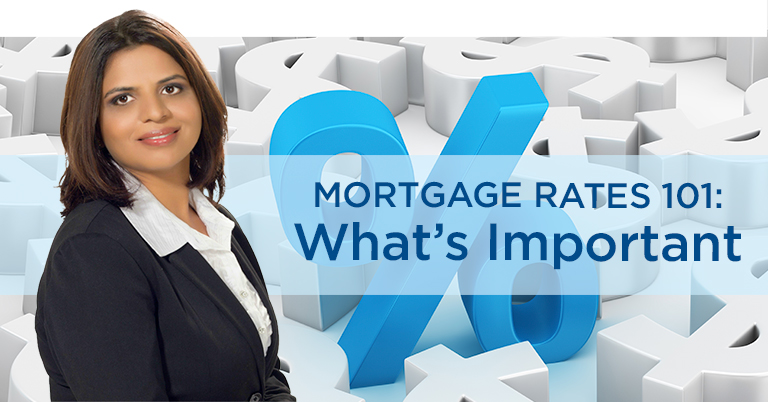Homebuyers and homeowners in Brampton, Toronto and the GTA always have many questions about mortgage rates – how they are set, why some go up and others don’t, why most don’t qualify for online rates, why there are so many different types of rates and ultimately, what is the best rate for them!
We have been fortunate that government policies to help the economy during the pandemic created exceptionally low fixed and variable mortgage rates. Now as signs point towards a recovery, fixed rates have edged up slightly. The prime rate, in which variable rates and home equity lines of credit are based on, did not increase after the Bank of Canada in their last announcement stated that they were keeping the benchmark rate steady. So why did fixed go up but not prime? Let’s look at the mechanics of both for some Mortgage Rates 101.
About variable rates
The chartered banks set their own prime lending rate, which is the rate they offer their best customers. They base their prime rate decisions on the Bank of Canada’s overnight or benchmark rate because that’s the rate that affects their own borrowing. There are approximately eight times a year the Bank of Canada announces whether the overnight rate will increase, decrease, or hold. In their most recent announcement, they held the overnight rate and did not mention when they foresee the need to increase rates. This benefitted variable mortgage rates and lines of credit because they move in conjunction with the prime lending rate. Currently, most lenders are offering variables at prime minus a certain percentage.
About fixed rates
Fixed-rate mortgages are quite a bit different. Banks predominantly use Government of Canada bonds to raise money for fixed-rate mortgages. In the bond market, interest rates can frequently fluctuate because they are subject to the up and down moods of traders and bond investors as they try to determine how fast the economy will grow and what is going to happen with inflation. That’s why when you want clues on where fixed mortgage rates are heading, just watch the bond market. As we head to recovery, there are inflationary concerns, which caused the yield for 5-year government bonds to go up, with fixed mortgage rates following soon after.
And why so many mortgage rates?
Fixed are variable are the primary two types of mortgage rates to choose from, but there are many other rates to know about. There are rate premiums for rental properties, 30-year amortizations, and refinances. There are different rates for insured, insurable and uninsured mortgages. Deep-discounted online rates typically come with restrictions and high penalties that can really cost you. The rate you qualify for can be very different from what your family and friends get.
That’s why it is so important for homebuyers and homeowners in Brampton, Toronto and the GTA to have a discussion with me and get unbiased professional rate advice. Together, we can determine the best mortgage and rate for your situation, whether you are looking to purchase, renew, or refinance. Get in touch at any time, I love talking about mortgage rates and helping my clients make the most informed decisions possible.
One more thing. Here is a chart that shows how fixed rates track the bond yield and that fixed and variable (prime) don’t always move in the same way. It also illustrates just how low rates are on a historical basis. Note that my 5-year fixed rates are typically in the range of 1.5% above the 5-year bond, significantly lower than Bank posted rates.



